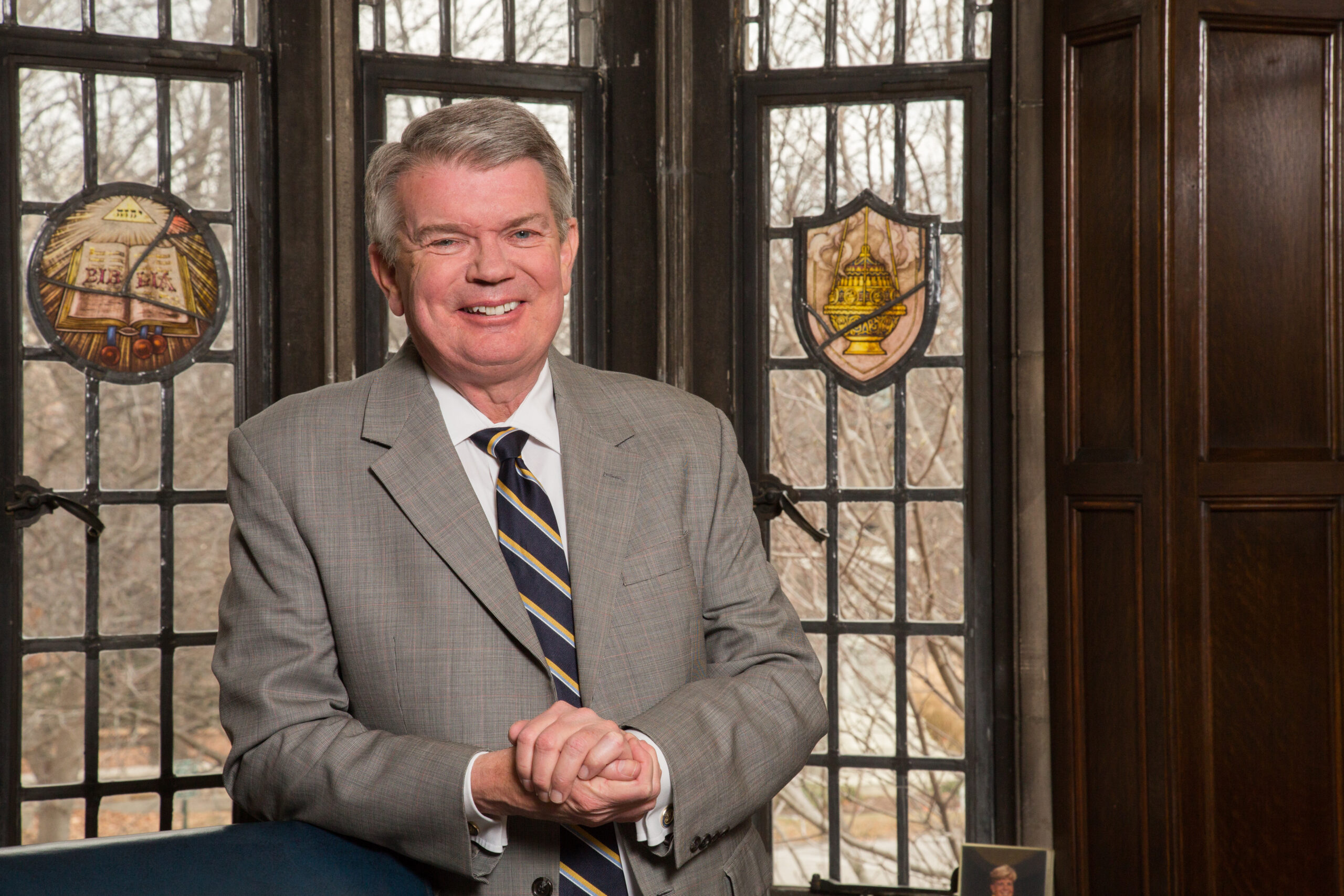
Concordia Seminary Newsroom
Dear alumni

May this Holy Week also be holy for you. As you lead your people to the cross and empty tomb, may the week be sanctified by your own meditation on what our Savior has done for you and for us all.
Last month I shared several things I’ve been reading. Not that you’re going to follow up on all of it, but I hope the suggestions were helpful in some small way, even if that means putting something on your list for the future. All of us who put out this alumni newsletter want to be encouraging and helpful.
My own Lenten musings have centered upon Luther’s Heidelberg Disputation, 500 years ago next month, April 26, 1518. I find Luther’s theses a scalpel cutting into my heart. They convince me that we church people are inveterate synergists. Original sin continues in our hearts, constantly tempting us to take some credit before God from the Law because of our pastoral works and faithfulness.
Gerhard Forde (On Being a Theologian of the Cross, 1997, Eerdmans) wrote that Luther’s 28 theses are like an arch (fitting for St. Louis graduates!). At one base, the first thesis, is the Law: “The law of God, the most salutary doctrine of life, cannot advance human beings on their way to righteousness, but rather hinders them.” Applying the cut, confidence in our works as pastors is dangerous to our own spiritual self-understanding. So, for example, thesis 11 strikes deep. “Arrogance cannot be avoided nor can true hope be present, unless the judgment of damnation is feared in every work.” In the proof for that thesis, Luther writes, “It is impossible to hope in God unless one has despaired regarding all creatures and knows that nothing can profit oneself without God. Since there is no person who has this pure hope … and since we still place some confidence in the creature, it is clear that we must, because of impurity in all things, fear the judgment of God.” This is God’s “alien work,” and He works it on us Seminary grads as much as on the people we serve.
Near the top of the arch are theses 16-18. 16: “The person who believes that one can obtain grace ‘by doing what is in oneself’ adds sin to sin and thus becomes doubly guilty.” 17: “Nor does speaking in this manner give cause for despair, but rather for humility, for it arouses the desire to seek the grace of Christ.” 18: “It is certain that one must utterly despair of oneself in order to be made fit to receive the grace of Christ.” Forde comments: “When all our human possibilities have been exhausted and we have been reduced to nothing, the one who creates out of nothing does his ‘proper work’” (Forde, 22; emphases mine).
At the other base of the arch Luther speaks of love, God’s “proper work.” Remember, Law was thesis 1; now God’s love is the fulfilling of the Law. Thesis 28: “God’s love does not find, but creates, that which is pleasing to it. Human love comes into being through that which is pleasing to it.” From Luther’s proof: “This is the love of the cross, born of the cross, which turns in the direction where it does not find good, which it may enjoy, but where it may confer good upon the evil and needy person.”
How, then, should we see ourselves under this Law/Gospel arch when we perform our duties in humility and fear of God? Thesis 6: “The works of God—we speak of those that are done through human beings—are thus not merits as if they were sinless.” From Luther’s proof: “There is a comparison: If someone cuts with a rusty and rough hatchet, even though the worker is a good craftsman, the hatchet leaves bad, jagged, and ugly gashes. So it is when God works through us, etc.” God is the good craftsman; we ministers and deaconesses are the rusty hatchets. Our hope and prayer for our ministry is that He indeed works through us “rusty hatchets.” And so He will. Thesis 27: “Properly speaking, one should call Christ’s work an active work and our work a passive work, and thus the passive work is pleasing to God by the grace of the active work.” From Luther’s proof: “(This is so) because while Christ lives in us through faith, he now moves us to do good works through that living faith in his works. For the works that he does are for us the fulfillment, given through faith, of God’s commands. When we look at them, we are moved to imitate them.”
Luther’s theses are a scalpel cutting into any pride we might have about our pastoral works and faithfulness in ministry. It’s some cutting I need; we all do. You can read the Heidelberg Disputation in the American Edition of Luther’s works, Volume 31, Career of the Reformer. New from Fortress Press is a great six-volume set, The Annotated Luther. Volume One, The Roots of Reform, has the Heidelberg Disputation with informative notes. By the way, Paul Robinson and Erik Herrmann of our faculty have contributed to this series. And the latest issue of The Lutheran Layman from Lutheran Hour Ministry has a good introduction to the events at Heidelberg.
Easter comes. May the cut of the scalpel open the way for the Spirit to apply Gospel balm to your deepest being. Christ is risen. He is risen indeed!
Dale
Dr. Dale A. Meyer, President
Concordia Seminary, St. Louis